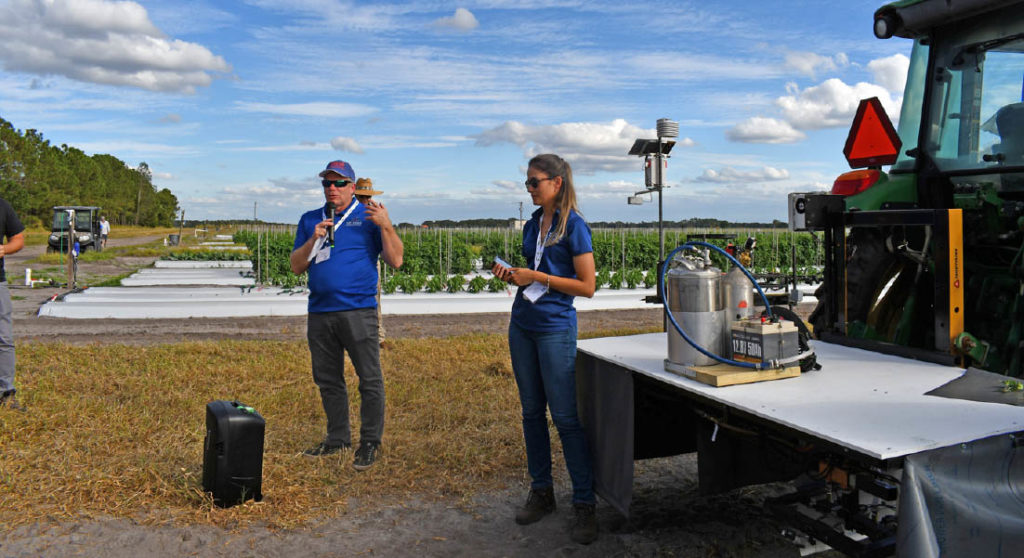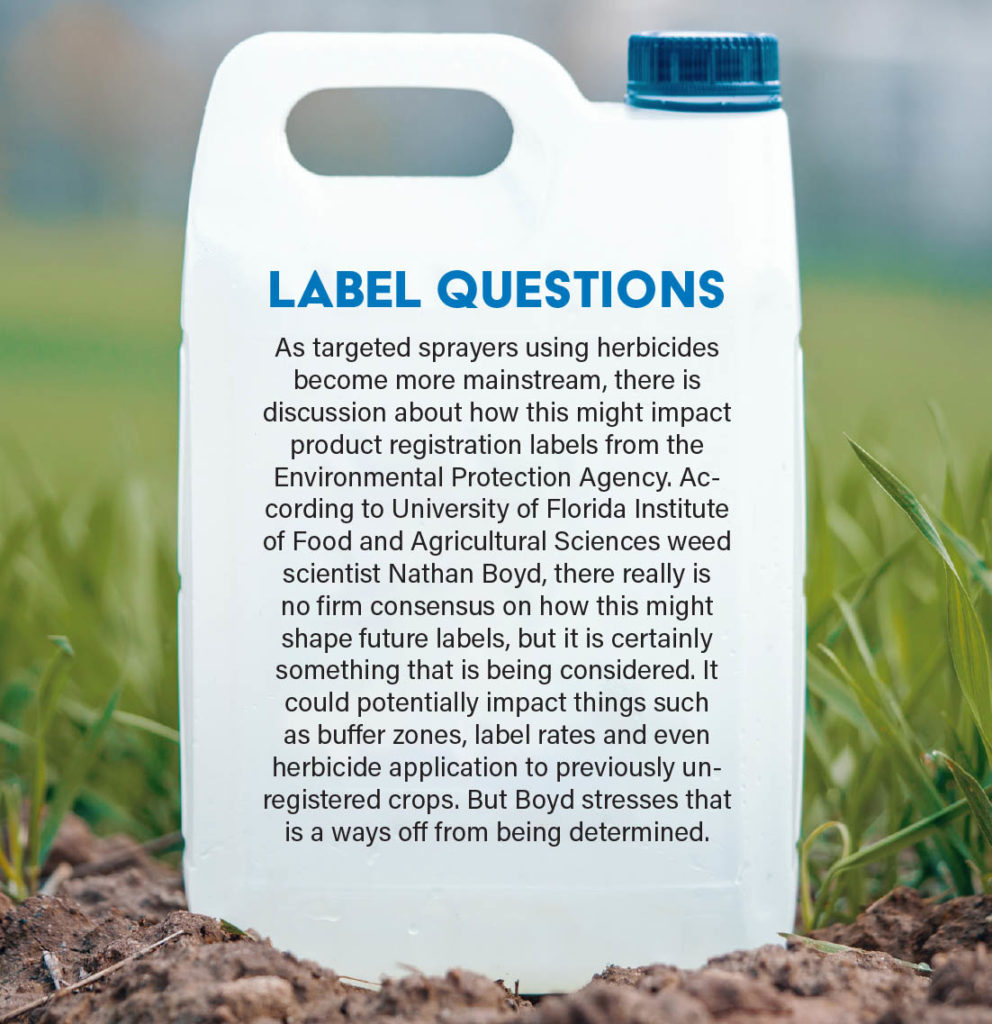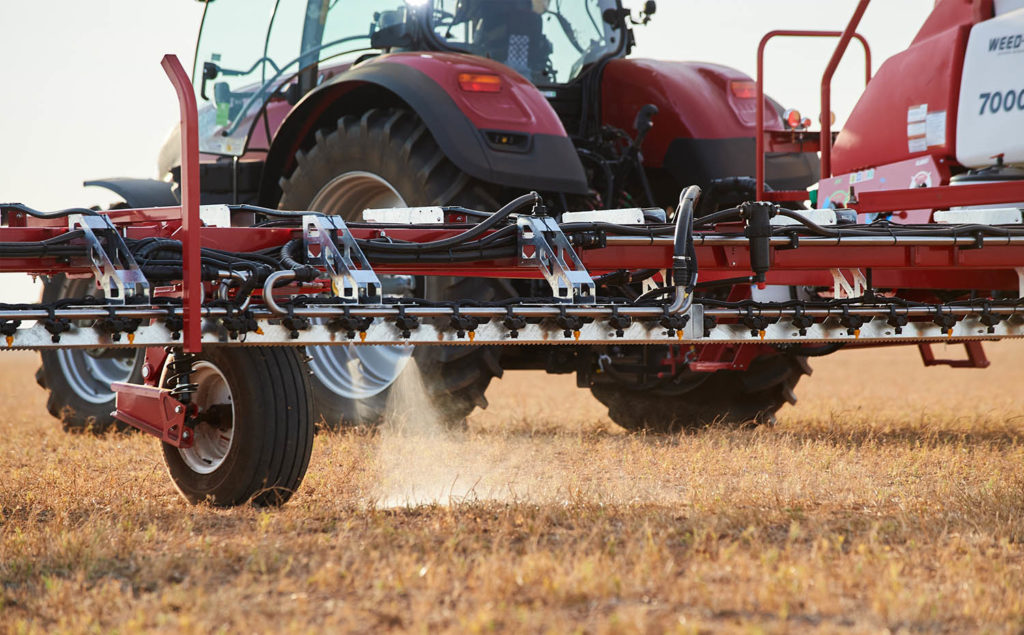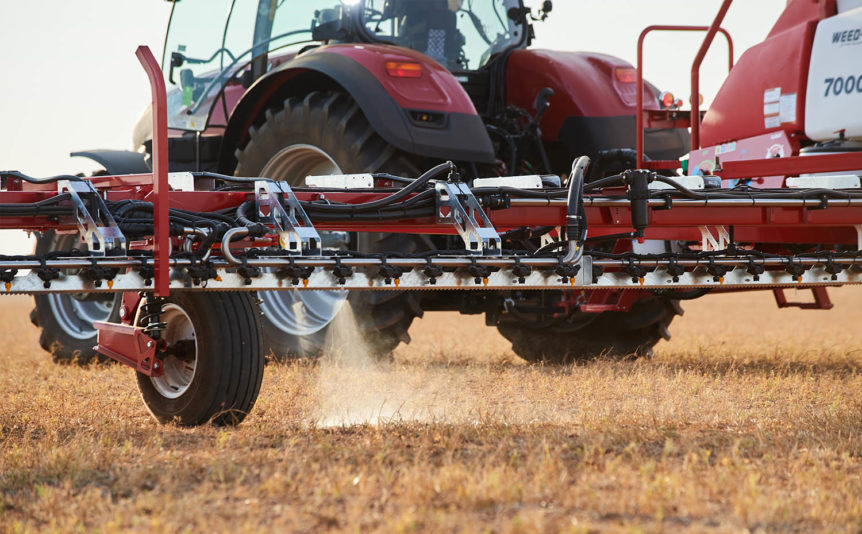
By Frank Giles
There have been two major forces driving innovation in specialty crop agriculture. No. 1 is the challenge growers have in sourcing a dependable workforce to grow and harvest crops. No. 2 is the push to become more efficient and profitable by reducing production costs.

Robotics and automation are developing rapidly with promises to help growers address those challenges and more. One of the rapidly developing frontiers is in weed management.
Nathan Boyd, a weed scientist with the University of Florida Institute of Food and Agricultural Sciences (UF/IFAS) has been developing his own targeted spray equipment. The system targets weeds only, leading to reduced herbicide usage. He said there are many players in the segment and various definitions that can be applied to the technology.
“Targeted weed management is the application of an end-effector (spray or cultivation) only where needed. This is not necessarily robotics,” Boyd says. “Although there are many companies working on autonomous robots for weed control, many of the big players have reverted to tractor-pulled implements because growers are less willing to adopt autonomous vehicles, at least at this time, for a variety of reasons.”
Collaboration and Commercialization
Boyd has been working on his targeted spraying technologies for the past seven years, along with Arnold Schumann, UF/IFAS professor of soil and water science. The system uses machine vision to detect and identify weeds using RGB cameras. A spray controller is used to apply herbicides only where the weeds occur. Development work has shown the sprayer can reduce herbicide costs by up to 78% when compared to conventional applications.
“Arnold and I have been working on this, and I could not have done it without him. Our collaborative relationship has been the most productive of my career,” Boyd says. “It goes to show how much can be accomplished if people with very different skillsets combine their abilities to achieve what neither could do on their own.”

One of the challenges in this arena is moving technology from an academic exercise to a commercial technology that growers can use in their fields. Boyd is working his technology toward that goal.
“We have functional prototypes of the spray system and are now developing commercial units,” he says. “We recently received a U.S. Department of Agriculture-Small Business Innovation Research and Technology Transfer Programs grant in collaboration with the University of Florida to help us commercialize the technology.”
The University of Florida Innovate division’s goal is to work with researchers to move their work toward commercialization. The division has been assisting Boyd with his technology. He says it provides support in many ways, like developing the technology’s pitch materials and slide deck, training and other resources. The sprayer is patented through the university, and Boyd’s company (EZ Ag Innovations) licenses the technology through the university.
Advancing Technology
Some of the most significant enablers of this targeted spraying revolution are advanced computing power and more precise and affordable camera and imaging systems. Tasks that are routine now would not have been possible five to 10 years ago. Advancements in artificial intelligence and machine learning will continue to increase in the coming years.
“This evolution in technology is critical, and it is advancing rapidly. Hardware keeps getting better,” Boyd says. “If you read some of the older precision ag papers, you can see that people dreamed and hoped for the technology that we have today.”
Boyd says there are many players in the targeted weed control space, ranging from very large companies to small startups. According to a 2022 study by Western Growers Association, employing automation for weed control is by far the most popular with specialty crop growers.
These companies also have been more successful in obtaining venture capital investments, in part because the segment is easier to automate. Boyd calls it the “low-hanging fruit” of robotic/automation technology. And growers have been willing to collaborate with companies to develop technology this is practical and workable on the farm.
Determining Return on Investment
The biggest factor in the future of targeted weeding is its ability to provide a return on investment for growers. The machines can be expensive. How that pencils out with reductions in herbicide usage will be a case-by-case evaluation.
John Schueller, UF/IFAS professor of mechanical engineering, says part of the equation will be how much ground a machine can cover in a time-sensitive task like weed control. For example, the small autonomous weeding robots currently on the market might work well in a small-field environment. But what about large commercial fields where time equals money? And how can these machines navigate through mud, sand and tricky terrain? That math is much easier on seek-and-spray technology applied to conventional spray systems.
“A lot of the proposed robots are small. I understand that for scouting and some other operations,” Schueller says. “But contemporary agriculture involves the transportation to and insertion into fields of many tons of crop inputs. At the end of the season, hopefully many tons of product will be removed. This is both a problem and an opportunity for robotics. Humans may want to supervise the operation of automated machines for a long time. However, material handling (and reduction) would seem to me to be a big opportunity for robots.
“A large boom sprayer or orchard sprayer can cover a lot of territory very fast. That is the advantage. These targeted systems were initially much slower because they had trouble finding the weeds. Now they can find the weeds much better because of the improved computing and cameras. Now it is more of a question of whether it is killing the weeds fast enough. Growers will have to decide if this approach is better than other methods of weed suppression. One of the big factors in the cost is how many acres you can cover in an hour.”
Despite the remaining obstacles, Boyd is confident targeted weed control is the way of the future. It will come in multiple forms and options as more technology is commercialized and the market gets sorted out. He estimates the sprayer he has developed could provide a return on investment in two years on a 200-acre farm and less than a year on a farm larger than 1,000 acres.
“This field is still in its early stages of development, but I predict it will become the norm, not the exception, in the not-too-distant future,” Boyd says. “Why would you broadcast herbicides if you could apply them only where needed? But the fact remains that targeted weed control or robotics is just a tool. You still need to use these technologies within a solid integrated pest management system.”










